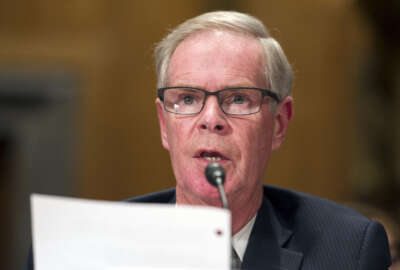

Government issued more improper payments in fiscal 2015 — $137 billion — a new high for agencies since the Office of Management and Budget first began measuring...
Agency financial offices have helped the Office of Management and Budget focus more on challenging new pieces of policy and less on hot-button issues such as travel and conference spending in recent years.
But as the tally on improper payments and material weaknesses has crept upward, OMB is asking the accounting community to focus on getting the numbers right, because agencies will soon need their financial officers’ help to adopt new programs like enterprise risk management.
“We’ve been able to concentrate on financial management policy a lot more in the last couple years, because you have allowed us to do so,” Mark Reger, deputy controller at OMB, said Sept. 21 at the Association of Government Accountants’ conference on internal controls in Washington. “We haven’t had those events that occur in every agency occasionally that draw all the media attention toward things like bicycles, muffins, some of the other things that quite frankly occur, plague us and draw our attention.”
Agencies issued $136.7 billion in improper payments during fiscal 2015, the largest annual total since 2004 when agencies first began reporting data on the subject. The tally was $12 billion higher than what was previously projected for 2015 and raised the cumulative total of improper payments above $1 trillion for the first time.
“Everybody outside this room counts on you to make sure the numbers are right because they have no view in that at all,” Reger said.
“Go home tonight, [and] find out what your agency does about improper payments,” he added. “In everything you do, start to look for that opportunity to suggest to somebody to improve improper payments.”
This year, OMB recently asked agencies to include a more detailed description of some of the root causes behind improper payments within their financial reports.
“We’re hoping that by giving that additional insight on what actually is driving improper payments, it will help us target how to reduce those improper payment amounts,” Regina Kearney, branch chief of the Office of Federal Financial Management within OMB, said.
Agencies are also getting more material weaknesses in recent years, OMB said.
“This is concerning to us, obviously,” Kearney said. “We want to see the trend reverse and to go back to a positive move. We have collected from agencies collective action plans. We’re going through them, we’re analyzing them [and] we’re working with the agencies, so this is an area where you can expect us to be closely engaged in over time.”
When it comes to improper payments and material weaknesses, agencies haven’t necessarily gotten sloppy, Kearney said.
But they are continually being asked to do more with less, she said. She cited the DATA Act as an example of an unfunded mandate that agencies must fit into their schedules and budgets.
“There’s a lot of balls that agencies are juggling, and you’re going to have a little bit of slippage when some of that occurs. We just want to make sure that agencies re-focus and make sure that we can reverse that trend and turn that back around.”
Reger said he wanted to remind the financial community that the “nuts and bolts” of accounting still matter.
“We’re still the envy of the world on financial management,” he said. “Let’s not lose that.”
Agency accountants and financial officers have an important role to play as their organizations begin to stand up enterprise risk management programs, Reger said.
This mandate on ERM came in the form of a long-awaited update to Circular A-123, which OMB released in July. As agencies develop risk assessments and plans to manage them, issues of internal controls and assurance will become a bigger part of other offices and parts of the organization, who may not have much experience in those areas, Reger said.
“They don’t understand that the routine management activities provide them with assurance,” he said. “They don’t necessarily understand how important it is to have those routine management activities of checking things and documenting that so there is believability in the reports and the information that they provide too.”
Earning clean financial opinions with little to no material weaknesses will help, Reger said. But OMB acknowledged that there will be challenges as agencies adopt ERM programs.
OMB hosted town hall meetings on ERM with some agencies last week and is planning more to train leaders on enterprise risk management, Kearney said.
One of the largest challenges may come from the culture change that agencies will undergo to be more transparent about their risks.
That’s a particularly large concern for Tim Soltis, deputy chief financial officer for the Education Department. He helped work with OMB to develop the A-123 update and ERM guidance.
“The culture of transparency is not something, in all the years I’ve worked in government, I’ve found to be prevalent,” he said. “People tend to, if you admit something, it becomes your problem. You get blamed for it. The culture of saying, ‘hey, here’s a problem, I can’t fix it,’ is difficult. Or, to call out problems the elephant in the room, that everyone knows exists, but … no one wants to call that out. If you don’t have those discussions, then ERM’s not going to happen.”
Agencies will also be hesitant to admit their risks to Congress and internal and external oversight organizations, Soltis said.
“Going in front of the congressional committee and saying, ‘it’s acceptable to me for $2 billion to be improperly spent by the Social Security Administration,'” he said as an example. “Is Congress really buying in? Can you really publish a risk appetite and say, ‘this is as good as it gets.'”
Copyright © 2025 Federal News Network. All rights reserved. This website is not intended for users located within the European Economic Area.
Nicole Ogrysko is a reporter for Federal News Network focusing on the federal workforce and federal pay and benefits.
Follow @nogryskoWFED


